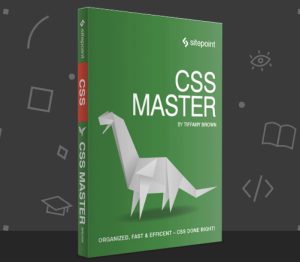A little over a month ago I launched what I hope will be an annual thing here at SitePoint: The Ultimate CSS Survey – a 3-part survey aimed at gathering info on the habits and preferences of CSS developers in the industry.
Thanks to support from CSS-Tricks, Sidebar, and lots of others in the community, we were able to compile more than 6,800 entries in the three parts combined. Part one alone was filled out more than 3,400 times!
Now that we’ve allowed some time to pass, we’re ready to have a look at the results. I’ve embedded the official Typeform results from each part on this page. Below each of the embedded results pages I’ve put together a bullet list of some of the most common and useful bits of feedback we received in the optional “feedback” question.
I know this was not a perfect survey, and some of the questions did not cover all bases so to speak – so we’ll definitely improve on that next year, thanks to the feedback we received.
The Results: Part 1 (Skills and Habits)
Use the up/down arrows to cycle through the survey results ↑
Before I get to reader feedback, I should point out that there was a huge misunderstanding in question #10. That question asked “For new projects, what is your current primary layout technique for a page’s basic structure?” A whopping 36% of participants said they use the Grid Layout Module (more than floats and flexbox!). This is incorrect. Grid Layout has awful browser support. Clearly, most people filling out the survey thought I was referring to some kind of framework-based grid system (like that found in Bootstrap). So chalk that one up to a poorly-worded question/answers, along with a lack of understanding of what exactly is Grid Layout. We’ll try to improve the wording on that one in the future.
Feedback on Part 1
Here’s some of the feedback provided by participants who filled out part one:
- For question #2 (“How would you describe yourself?”), many people pointed out that there should be an option for “full stack developer” or some other way to indicate that they do both front-end and back-end equally. We’ll definitely include that option in a future survey, but most of those developers probably picked “None of the above” so we can make a pretty decent guess about that.
- For question #23 on the use of
!importantdeclarations, many pointed out that they use!importantonly on single-purpose utility classes, or something similar. I’m guessing these developers chose “occasionally”, but it would probably be good to include that as an option in a future survey. - Many people pointed out that there should be more questions about Sass and preprocessors. Parts 2 and 3 included some more on this subject but a preprocessor survey is certainly a possibility in the future.
- For the multiple-choice questions, participants wanted a “none” option. Some even claimed that Typeform didn’t allow them to submit the survey without choosing at least one. Those questions were optional and clearly marked as such, and I’ve tested this, so I’m not sure why they had trouble with that. There might be a Typeform bug in some browsers/platforms.
- Many felt question #12 on CSS units did not cover their specific case. I was pretty much expecting this. It’s hard to cover every possibility with some of these questions.
- Some pointed out that the questions were biased towards freelance developers and agencies, thus many of the queries don’t cover developers who work continuously on a single app or project in a corporate environment. This is definitely something that we’ll correct in future surveys.
- Question #20 (“How many CSS files do you typically create?”) should have taken frameworks into account, or else specified that this was only about custom CSS outside of framework files (modified or not).
- Many people pointed out that the three surveys gave them lots of new ideas for things to research and learn, so that’s great.
- Question #25 on lesser-used CSS units had a typo: the unit “ec” (which doesn’t exist) was supposed to be “ex” so the results are a bit skewed for that particular question.
The Results: Part 2 (Tools and Workflow)
Use the up/down arrows to cycle through the survey results ↑
Feedback on Part 2
Here’s some of the feedback provided by participants who filled out part two:
- Question #6 on whether CSS should have been more like Sass in the beginning was too leading with its “no” answer.
- A few pointed out that some of the questions were far too broad in terms of time. For example, some have used CSS hacks, but not for a very long time.
- One person pointed out that they use Bootstrap because they’re forced to at work, but not by choice. This might be something to include in a future survey.
- Question #16 about managing CSS via JavaScript was too black-and-white. Some feel it’s very appropriate in certain instances while not in others.
- Some wanted to be notified via email when the results were posted. We’ll definitely do this in the future.
- Question #7 on text editors should probably also include popular IDEs. Many people filled in the “other” option for this, mentioning tools like PHPStorm, Visual Studio, NetBeans, etc.
- Questions #13 and #14 on filing CSS bugs should include an option for “I’ve never found a CSS bug” or something similar.
The Results: Part 3 (Standards and Learning)
Use the up/down arrows to cycle through the survey results ↑
Feedback on Part 3
Here’s some of the feedback provided by participants who filled out part three:
- Question #1 (“Do you think the W3C should introduce a better technology to replace CSS?”) shouldn’t be a yes/no question. It might be best to include a “no opinion” type answer or similar.
- Questions #10 and #13 (favorite/influential sites/people) should probably allow multiple choices rather than forcing everyone to pick just one. Some people pointed out that they wanted to give credit to more than one.
- One person mentioned that a major part of their learning process is inspecting the code of other websites, and that this is more educational to them than any blog or book. This would be a good addition to a future survey.
- A few people pointed out that developing CSS while working in a CMS is very different from what is implied by the questions in these three surveys. Might be something to try to incorporate in a future survey.
- For all three surveys, it might be useful to include a “does not apply to me” type answer for most, if not all, questions.
- A lot of people said they had never heard of any of the “influential” CSS people and many others felt it wasn’t important to vote on this.
Conclusion
There’s much we could discuss regarding the survey results, and we’ll definitely be doing that in upcoming posts. In some cases we’ll commission tutorials specifically geared towards topics that people mentioned they’re having trouble with. In other cases, we’ll discuss the results directly in a more opinion-oriented manner.
In any case – what are your thoughts on the results? Is there anything you found surprising? Do you have any further suggestions for improvements for a future survey? Let us know in the comments.
 Louis Lazaris
Louis LazarisLouis is a front-end developer, writer, and author who has been involved in the web dev industry since 2000. He blogs at Impressive Webs and curates Web Tools Weekly, a newsletter for front-end developers with a focus on tools.




